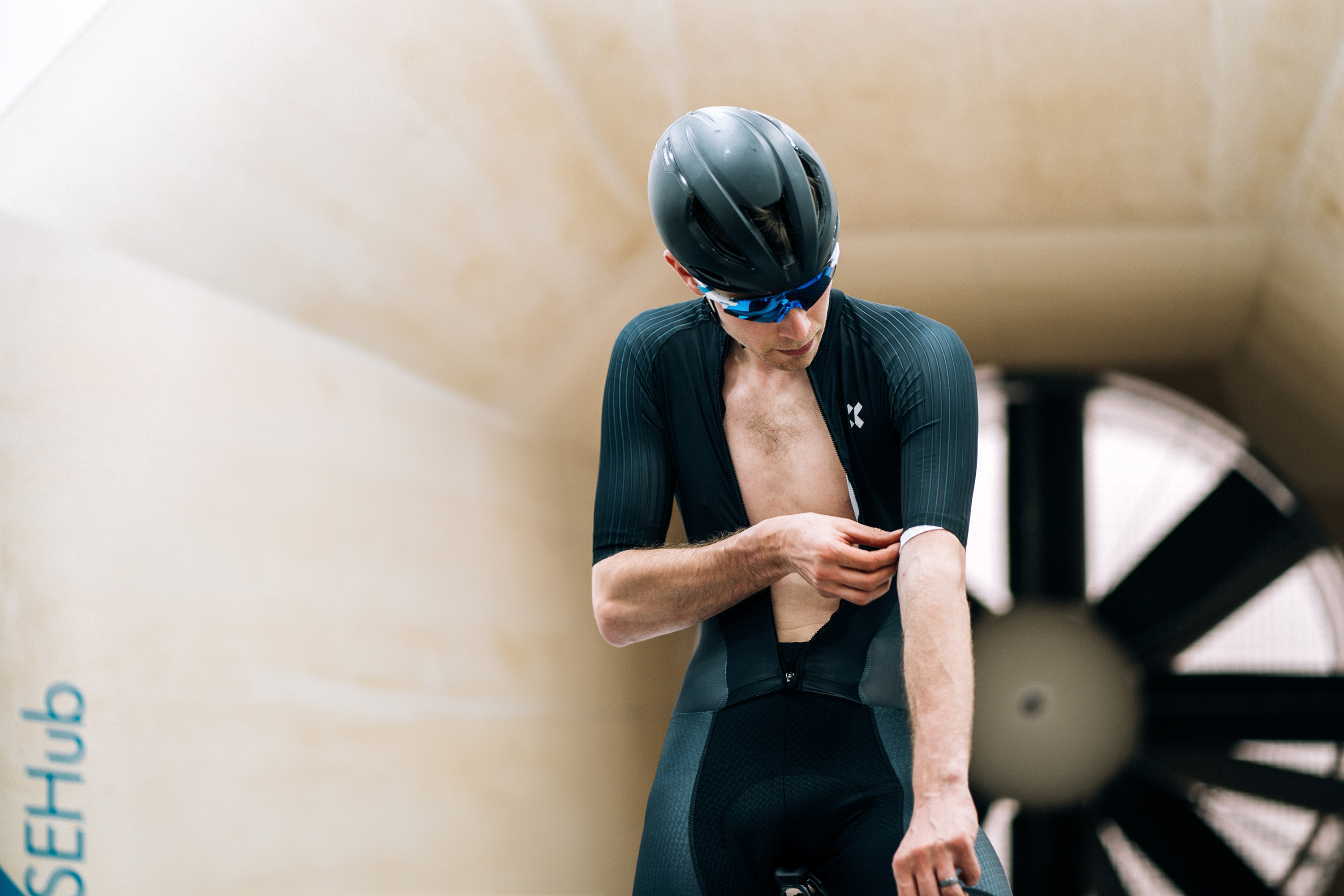
When we talk about aerodynamics in the context of your bike, it often has to be caveated with a reminder that the bike makes up only around 20 per cent of your total frontal area.
The rest is made up by… well, you, the rider.
Depending on your position on the bike, your torso and shoulders will likely make up the biggest portion alongside your legs, so when it comes to chasing aerodynamic gains in your equipment, your clothing is perhaps the most important area to focus on. So that's what we've done.
In this test, we wanted to understand how many watts you can buy in your clothing, so we pitted a basic jersey against an aero jersey, a skinsuit, a time trial suit, and even an Olympics-level suit that costs close to £500. We also threw an aero base layer into the mix before turning our attention to socks.
There, we tested a basic pair of cycling socks against a pair of aero socks, some 'extra tall' aero socks, a pair of aero overshoes, and in an apparent bid to get Cyclingnews cancelled, we even tested no socks at all.
Background
Over recent years, the technology used in cycling clothing has advanced greatly, especially in terms of aerodynamic properties.
Rewind 10 or 15 years, and it would have been unthinkable for a pro to wear a skinsuit in anything but a time trial, but nowadays, they're near ubiquitous on all race days, and you'd be a fool to give away the 'free' speed they can offer.
And it doesn't end at the skinsuits. Remember the ridicule that riders like Dan Bigham and Alex Dowsett went through when wearing aero socks? Now, everyone wears them, and riders are commonly seen with aero baselayers beneath their jerseys, too. Looking silly is no longer a barrier to going faster, and riders will happily forego style points for an aerodynamic edge.
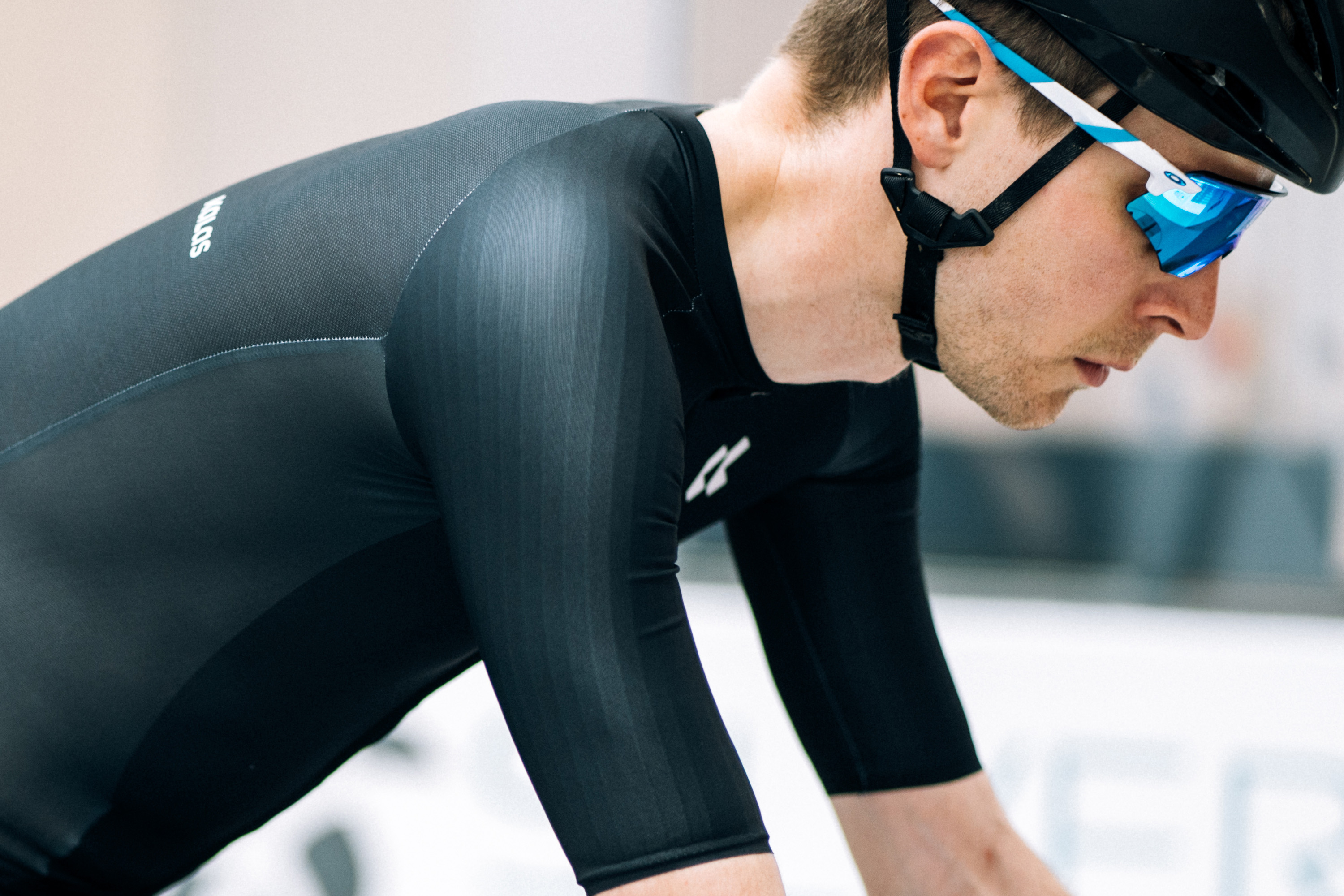
The number of development hours that go into the clever fabrics that certain cycling kit now features is ridiculous. With carefully placed trip strips of varying spacings, double-layer finishes, and so on, their costs can be equally so.
There are even clothing brands whose entire philosophy is about making you faster. One of the more specialist among them is Vorteq, whose parent company owns the Silverstone Sports Engineering Hub, home to the very wind tunnel where most of the CN Labs tests have taken place. If you're serious about getting faster, Vorteq will charge you upwards of £3,000 for a single skinsuit, which is custom-fitted following a consultation in the wind tunnel.
Put simply, we wanted to understand whether the expense, however big or small, was worth it. What gains are actually on the table here?
We've tested superbikes, helmets, wheels, and tyres, with various wattage savings available for each. But every upgrade has a cost-per-watt associated, so now we wanted to look at clothing, to see whether this is the right place to spend your hard-earned cash before dropping four figures on a new wheelset or more on a new bike.
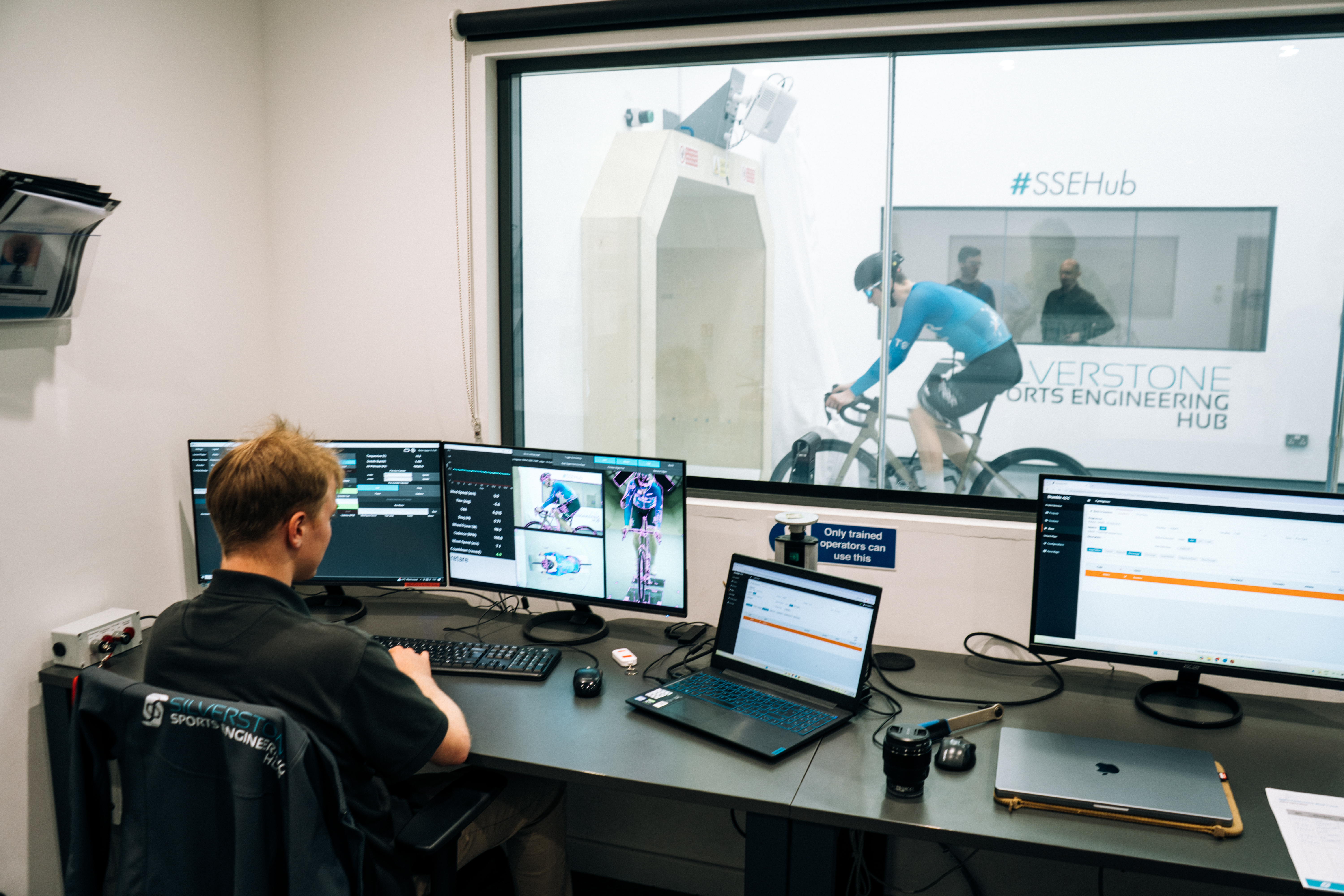
Protocols
For all of our tests – on clothing, socks, and other accessories – we followed the same protocols, so to avoid duplication, I'll outline them here.
Each test was performed in the wind tunnel at the Silverstone Sports Engineering Hub, with wind speed set at 40km/h (24.85mph) and the wheel speed set to match. The rider on the bike was me (Josh 👋), and my cadence was held at a constant 90rpm.
We were testing to find the CdA (Coefficient of Drag x Area), and this was captured at five different yaw angles: -10, -5, 0, +5 and +10 degrees. This is the angle at which the wind hits the rider, and although we could have stopped at zero – a direct headwind – since most people are largely symmetrical, we opted to test both sides to be more confident in the data we were seeing.
Each capture was held for 30 seconds. The longer the capture, generally, the more accurate the data, but with the caveat that the rider needs to hold as steady a position as possible. 30 seconds is a good sweetspot between the noisy data of short captures and the added fatigue and discomfort of longer captures, allowing us to get through more tests in the time we have.
When calculating the power required, I have weighted the CdA as set out in the research by Barry, 2018. This essentially increases the importance of the lower yaw angles in line with the frequency distribution found in the real world.
I have then calculated using the following equation, where Air Density is set at 1.2 kg/m3 and Velocity is 11.1111 m/s (40km/h).
Power (watts) = 0.5 x AirDensity x CdA x Velocity^3
Assuming the same air density, a lower CdA means less power is required to ride the same speed, so a lower CdA is better. With clothing, it's important to remember that other important factors such as comfort and thermoregulation can affect performance too. We've not tested that here.
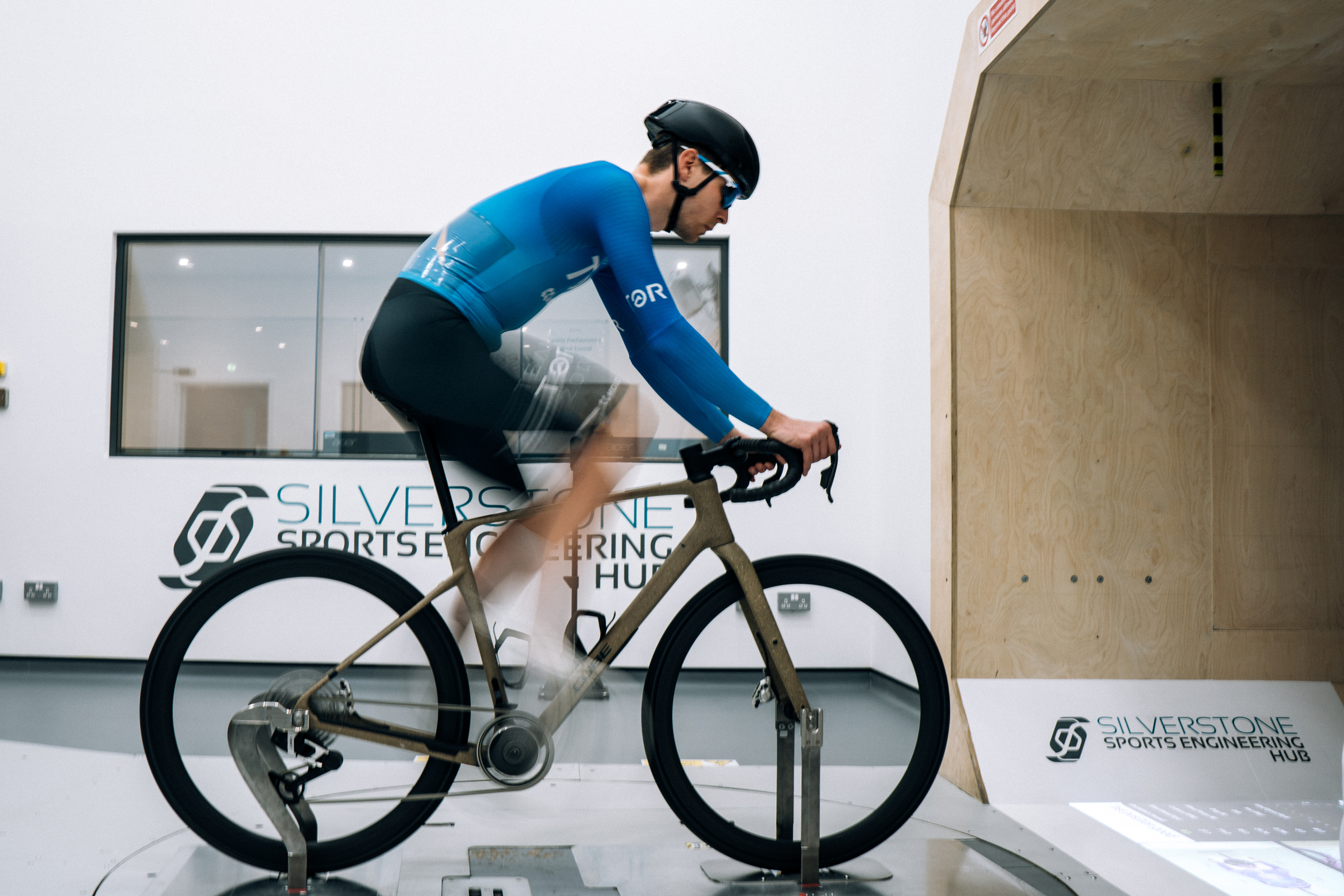
Standardisations
For each test, everything except for the product being tested was kept the same, meaning the bike, the rider, cadence, position, other kit, and test protocols remained unchanged throughout.
The wind tunnel was tared prior to each test, similar in principle to the tare on your kitchen scales or zero-offsetting your power meter to ensure accurate readings.
The bike in question was the Cube NuRoad C:62 SLT. My position on the bike was captured during the first test, and then projected to the floor for subsequent tests to help me recreate it.
Confidence margin
Our confidence margin for our results is +/- 0.0032 CdA, or 2.55 watts (at the tested 40km/h speed).
This was calculated by performing a baseline test at the start of the day, then a repeat at the end of the day using the same clothing setup. For clarity, this was tested using the blue Kalas Sonic time trial suit, with the standard cycling socks.
Since we have two results for the Sonic suit, I will use an average of the two when comparing against the other skinsuits.
The caveats
As with any of our CN Labs projects, Cyclingnews does not claim that this data is the final word on the aerodynamic performance of the items included, but rather an additional stream of independent, unbiased testing and information for our readers.
The results are simply representative of our day of testing. We hope that being clear about our method and our protocol allows readers to appreciate the data while also understanding the bigger picture.
We understand that the performance of cycling clothing can differ depending on the person wearing it. We're also aware that fabric performance can differ based on the speed being tested at.
To try to mitigate this and make it as applicable to others as possible, we opted to test in a fairly average race position (ie not upright, but not super aggressive) at a speed that reflects most amateur road races. In a perfect world, we'd have tested multiple riders at multiple speeds, but wind tunnels are expensive.
When making calculations for speed (and in turn, time to complete a 40km time trial), we aren't accounting for gradients, corners, drivetrain loss or any other variable. We're looking for the difference between each product here, not an absolute forecast.
This article includes paid product placement from Cube and Velotoze. Each partnership was approved by our editorial team and signed off by myself to ensure no undue influence over the testing undertaken nor the results found. Under the same stipulations, we also had a member of the Kalas team present to witness the testing, but this was for the brand's own curiosity about the results.
As ever, we paid for the wind tunnel hire at the normal rate, and this test, like all of our CN Labs projects, is made possible solely and entirely by the paying Cyclingnews subscribers. Without your support, these tests wouldn't happen, so thank you.
Clothing: Jersey vs skinsuit (vs very expensive skinsuit)
For this test, we wanted to see how many watts you could feasibly 'buy' in your clothing choices.
Or, to put it another way, we wanted to understand the aerodynamic differences between each approximate spend level in cycling kit, right through from entry-level bibs and jersey to the pinnacle of the WorldTour options.
So, for this test, I reached out to Czech kit manufacturer, Kalas. This is in no way sponsored, but given Kalas' kit spans the entire spectrum from entry-level club rider to secret-squirrel club Olympics kit, it was my first choice.
At the grassroots end of the sport, Kalas caters to hundreds of cycling clubs around the world (including two which I've been a part of over the years here in the UK). At the other end of the spectrum, Kalas provided kit to Team GB until this year, and Mathieu van der Poel's Alpecin Deceuninck have worn it for around half a decade.
We tested:
- 'Motion' - entry-level jersey - £99
- 'Passion' - premium level jersey - £129
- 'Passion Short Sleeve Brios' - road skin suit - £239
- Same, but with a Velotoze aero base layer beneath - Approx £339
- 'Sonic Long Sleeve TT' - time trial skin suit - £288
- 'Passion Project RR 1.0' - premium road skin suit - £449
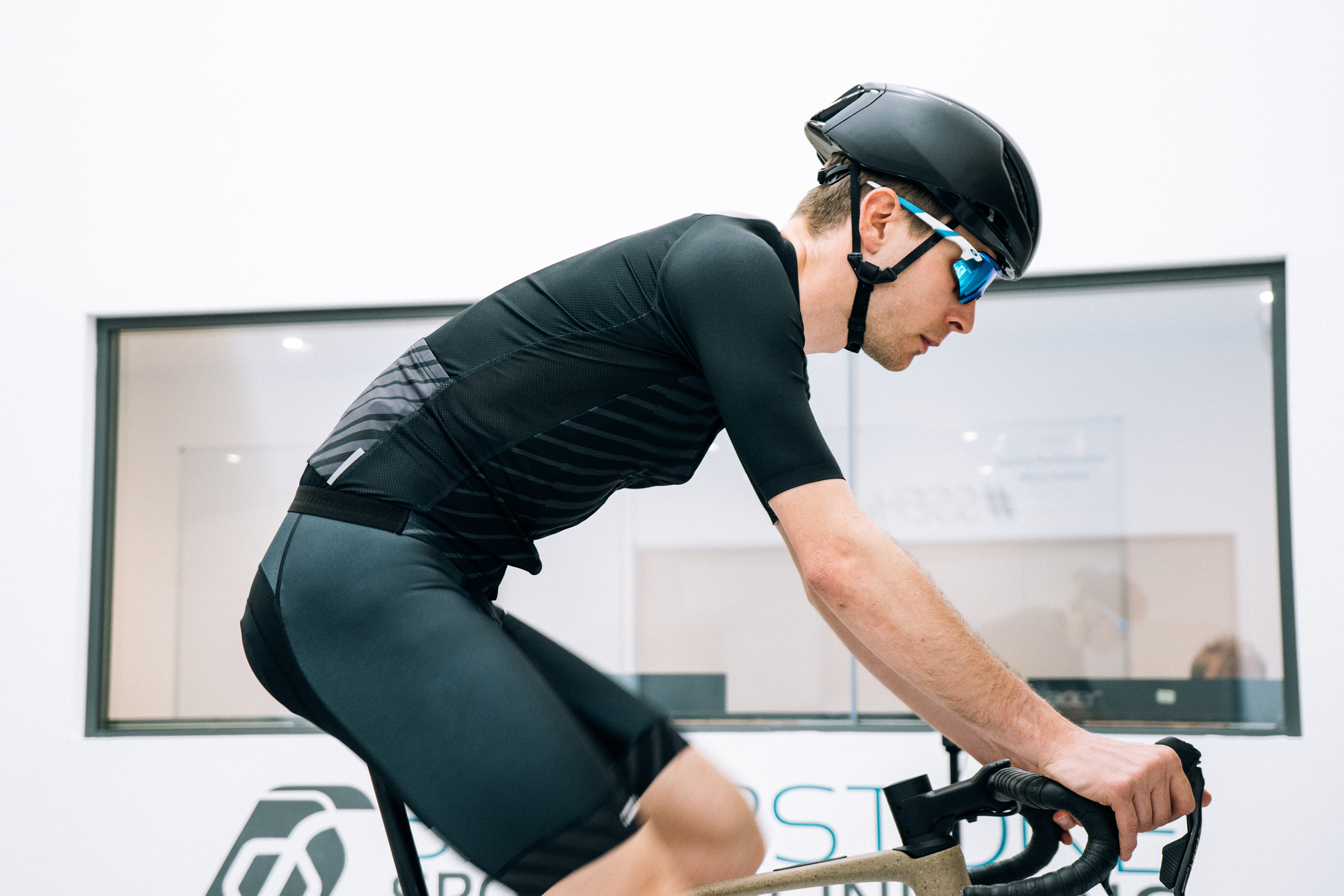
Our theory was that if you're new to cycling, there's a good chance you'll buy some budget-friendly kit. Often marketed to beginners, this sort of kit will be slightly looser fitting, with priority placed on comfort and affordability. I certainly started here many years ago, courtesy of my 'Exeter Wheelers Cycling Club' cycling jersey, and if you were in that same position nowadays, Kalas' option would put you in a Motion jersey, priced at £99.
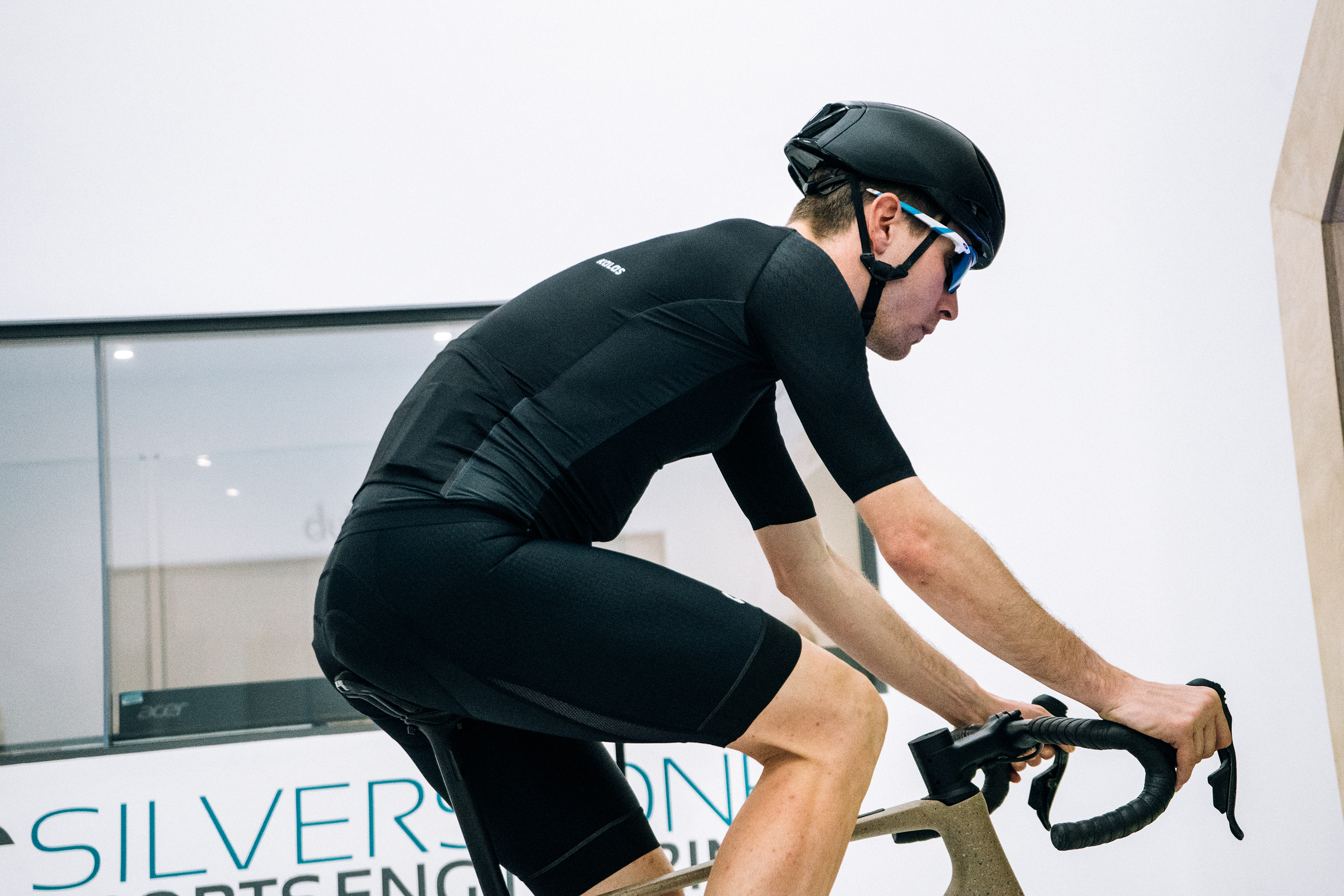
A while later, you might gain some competitive tendencies, so you'll take the plunge and upgrade to a slightly racier jersey with some aero fabrics and a slightly tighter cut. For me, that came alongside a switch to the successful local race team, Team Tor 2000, and with the serious step came an upgrade to the team's 'aero' jersey. Among the Kalas range today, that move would put you into the Passion jersey, so the £129 Passion Z3 flies the flag for this category today.
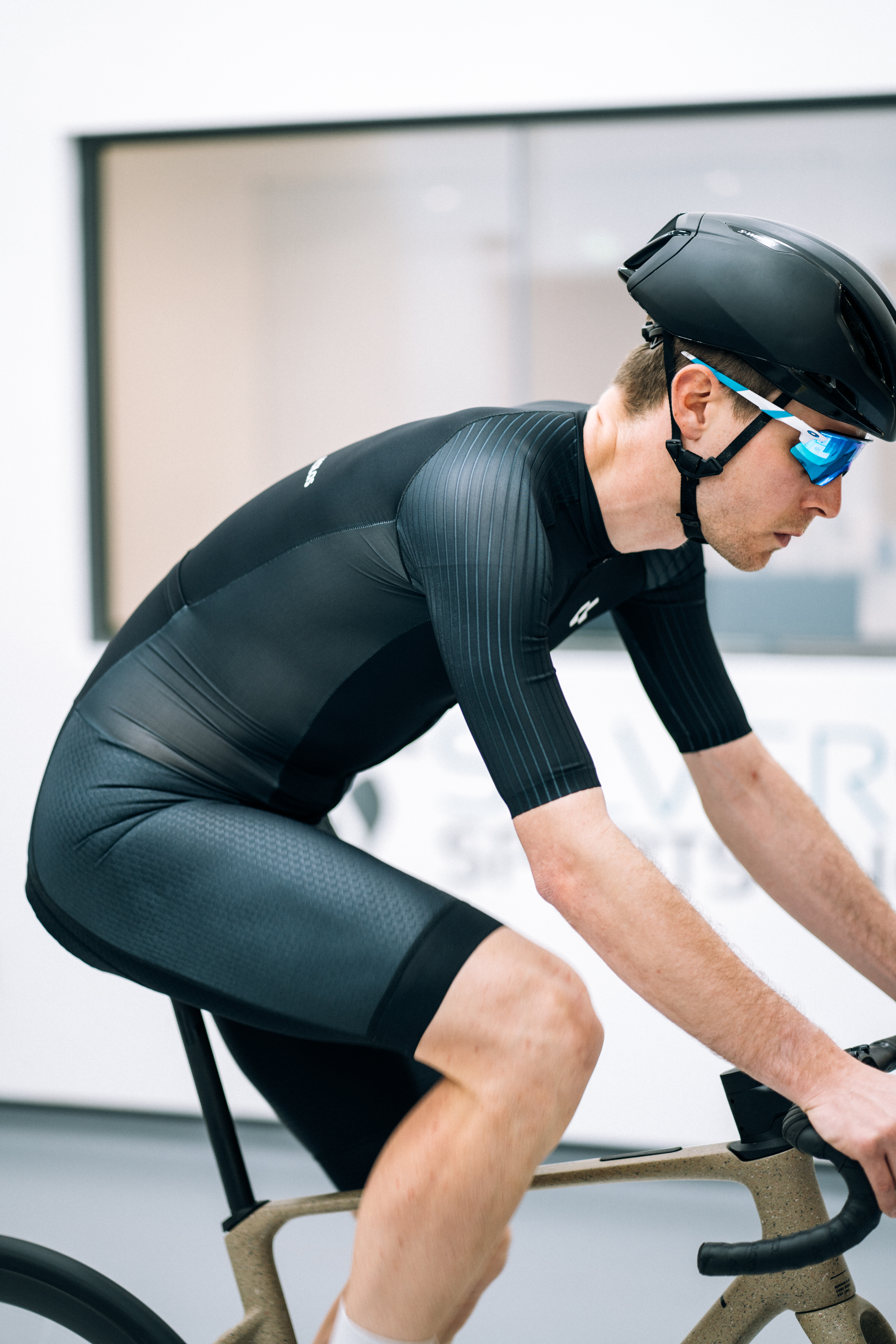
Later still, you might start racing more seriously, so you choose to upgrade to a race day skinsuit, with more aero fabrics and a seamless transition from top half to bottom. I've been here too, and the short-sleeved 'Brios' – priced at £239 – road suit represents this category.
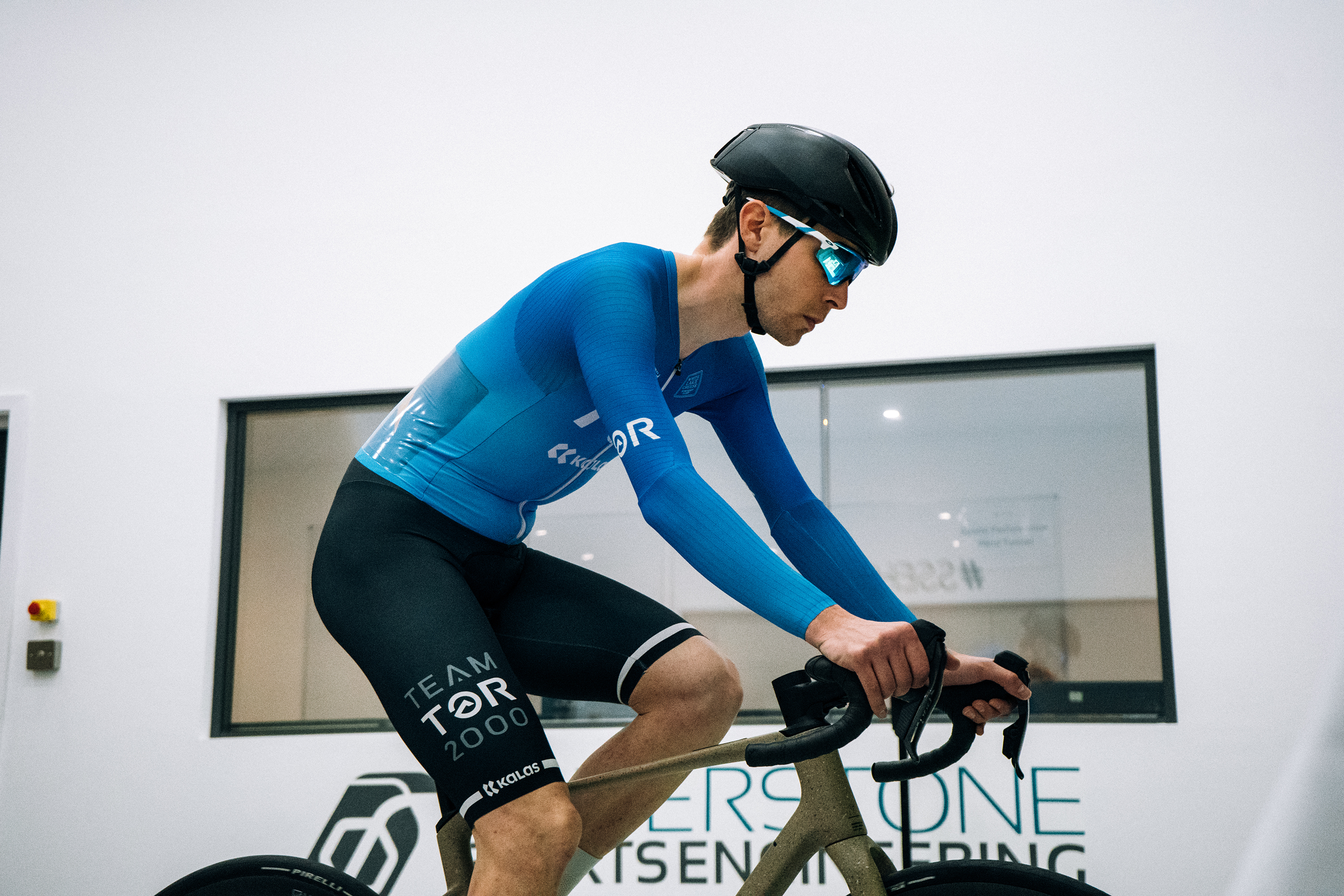
That's where most of us end the journey, but those with deeper pockets, a keener eye on equipment, or a fragile ego (👋 it's me, hi) might even switch to a time trial skinsuit, which often has long sleeves and no pockets in the pursuit of maximum efficiency. This is what I did a couple of years ago, and the blue Team Tor 'Sonic' suit has been my skinsuit of choice for all races since. It's no longer sold by Kalas (except within its custom range at £288), but it will represent this category today.
On the subject of buying aero-specific kit, the representative from kit manufacturer Kalas gave us some good advice on the day. This was that riders should avoid sizing down when purchasing something like a skinsuit, which is often a common motivation for riders when buying kit. The idea being that the smallest skinsuit a rider can feasibly fit into will have the least amount of wrinkles and flapping and thus be fastest overall.
This should be avoided wherever possible, as significant stretching of an undersized garment can result in the aero-specific material not working and interacting with the wind in the way it has been designed. In short, the gains from an expensive aero skinsuit could be undone if it's purchased in a size too small.
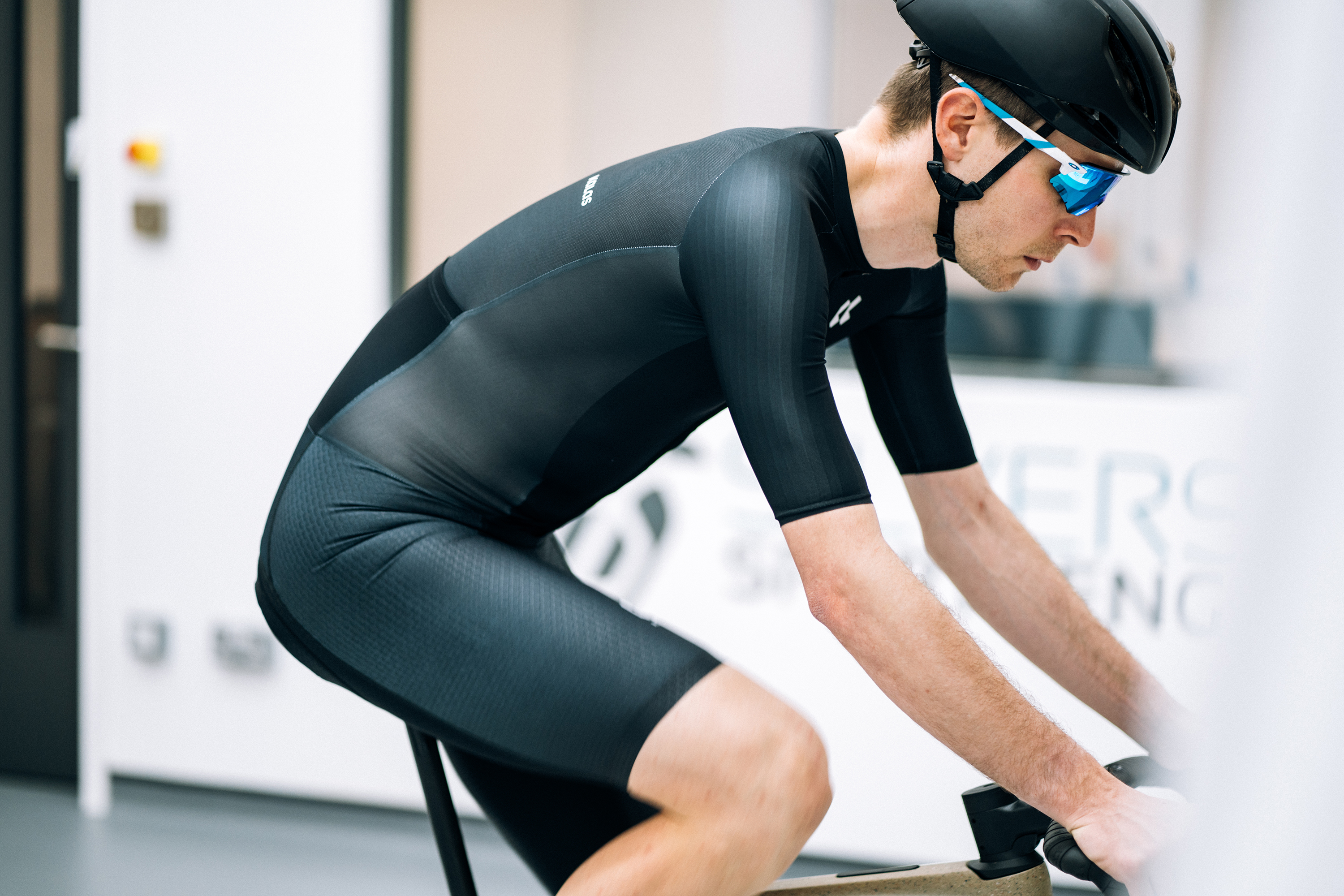
Next, for a select few of the very best athletes in the WorldTour, there's another level. Like the aforementioned Vorteq suit, some brands make pro-level kit with the latest in clever fabric tech. Unfortunately, a consultation day in the wind tunnel and subsequent custom tailoring was off the cards, but thanks to my prior experience with Kalas kit, I was able to pick my optimal size confidently, and the brand kindly supplied its off-the-peg equivalent. Priced at £449, the 'Project RR' was developed in conjunction with Vorteq and is Kalas' most premium piece of clothing.
And finally, for good measure, I wanted to see whether an aero base layer could mimic the gains offered by those double-layer fabrics, and so when Velotoze offered to send one alongside some socks, I was happy to accept.
Budget jersey
Starting with the budget-friendly 'Motion' jersey and bibs as our baseline, the weighted CdA is 0.4017 M² (+/- 0.0032). At 40km/h, that equates to a power of 330.64w (+/- 2.55). If you were to wear this over an arbitrary 40km time trial at 250 watts, it would take 1:05:52 to complete. Notably, this is the only jersey that I could feel 'flapping' in the wind in the test, and this is most evident at zero yaw (direct headwind) where the performance was noticeably worse than the more premium kit.
Premium jersey
Stepping up to the 'Passion' jersey, this is a more premium, better-fitted option. The performance does jump up, but not by much. Here, the weighted CdA is 0.4013 M² (+/- 0.0032). At 40km/h, that equates to a power of 330.31w (+/- 2.55). Over 40km at 250w, you'd save yourself just two seconds.
Skinsuit
Next, we step to the Passion Short Sleeve Brios skinsuit, and there's a significant step up in performance, especially at zero yaw. The weighted CdA is 0.3893 M² (+/- 0.0032). At 40km/h, that equates to a power of 320.41w (+/- 2.55), saving 40 seconds for a 40km time trial at 250w.
Aero base layer
Next up, we tested the same skinsuit, but with the addition of the Velotoze aero base layer beneath. This is where the real surprise was found, because it actually outperformed the Passion Project RR 1.0 'super suit' below, albeit within our margin of error. This had a weighted CdA of 0.3798 M² (+/- 0.0032). At 40km/h, that equates to a power of 312.58w (+/- 2.55), saving 1:14 over a 40km time trial at 250w.
When compared to the entry-level kit, that's a saving of 18.06 watts. Factoring our error margin into that, we can confidently say it'll save you a minimum of 12.79 watts or as many as 23.33!
Time trial suit
Next came the Sonic Long Sleeve TT, which was a surprising underperformer in the test. It had a weighted CdA of 0.3996 M² (+/- 0.0032). At 40km/h, that equates to a power of 328.86w (+/- 2.55), putting it within our error margin of the entry-level bibs and jersey.
There are, of course, possible explanations for this.
Firstly, this is my own skinsuit, so it's a two-year-old piece of clothing going against brand new box-fresh items. I'm unsure how much the aerodynamic performance of clothing deteriorates over time, but any stretching and shrinking through use and washing will undoubtedly make a difference. Secondly, it was designed for the speed and position found in a track team pursuit or time trial, meaning it's optimised for closer to 50km/h. Our test, in a more upright road position at 40km/h isn't its optimal playground, and no doubt had we tested in a different position, it would have fared better.
Super suit
Finally, we tested the big one. The Passion Project RR 1.0. At £449, this is a serious piece of clothing, and one that makes you wince (more than the rest) at the thought of crashing in. Of the standalone pieces, it performed best – only beaten by the combination of the Brios suit with the aero base layer. It landed a weighted CdA of 0.3853 M² (+/- 0.0032). At 40km/h, that equates to a power of 317.13w (+/- 2.55), meaning over 40km at 250w, you'd save yourself 55 seconds vs the entry-level kit.
I've mentioned the specific yaw angles a few times above, so I thought it worth including the graph to show the nuances, where you can see that performance at zero yaw especially was comparatively bad for the two jerseys.
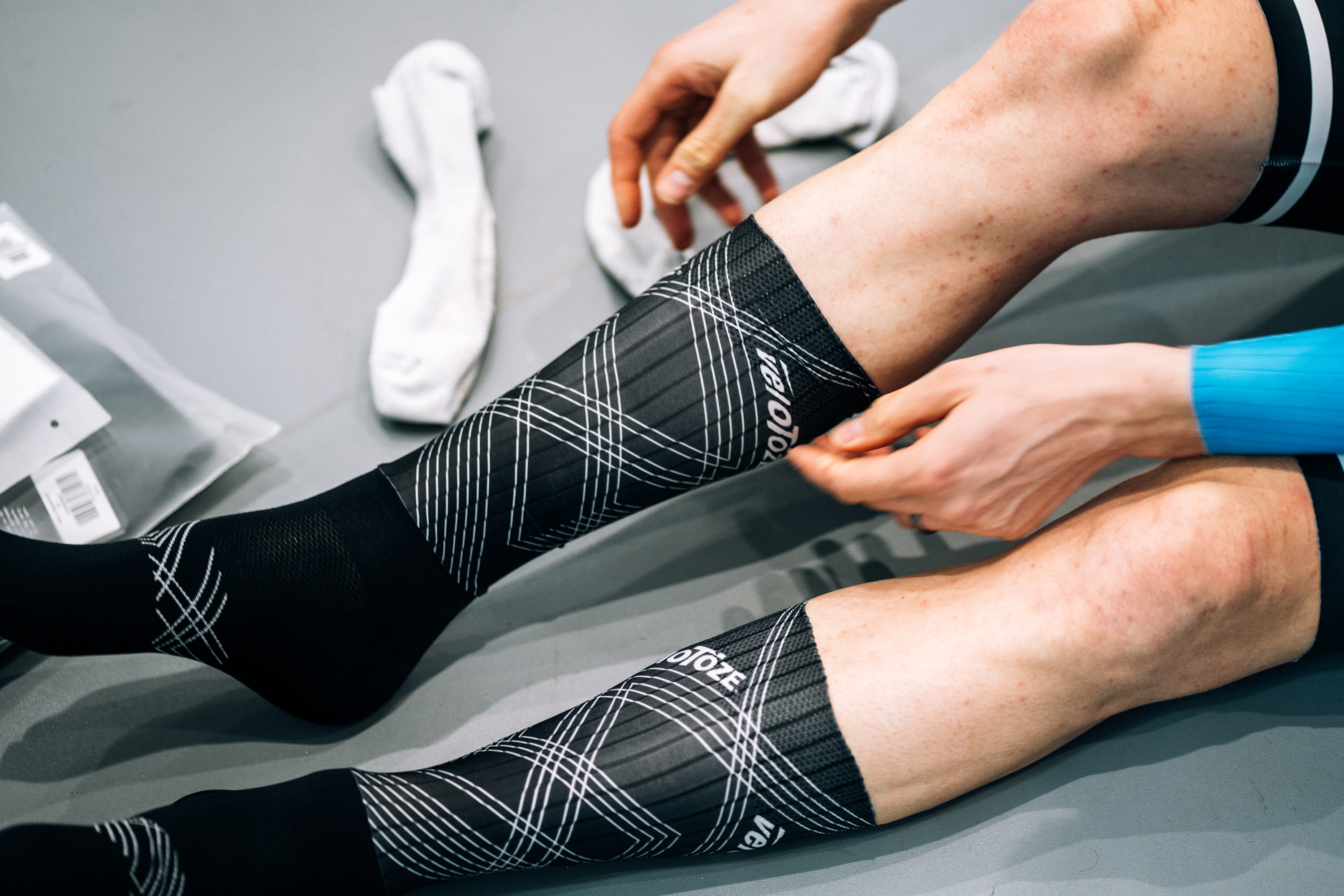
Socks or aero socks (or no socks)
Next up, it's time to look at our feet.
For this section, we primarily wanted to understand whether the hype around aero socks was justified, but we also chose to add in some extra adjacent tests, including a pair of aero overshoes, and, for the triathletes, no socks at all.
For this, we reached out to Velotoze, whose multiple heights of aero socks were a good fit, and with the addition of shoe covers in the range, made it a good fit.
It's worth saying here that we have another testing day booked soon, in which we plan to test aero socks in more detail, as we know that different brands will undoubtedly perform differently. But for now, Velotoze is flying the flag for team socks in the war against 'no socks'.
No pressure.
In this test, we covered the following:
- Standard socks (Sportful Matchy)
- No socks
- Velotoze Aero Socks
- Velotoze Aero Socks Extra Tall
- Velotoze Aero Shoe Covers
I appreciate this is a small test using just a small sample of items, but the data here tells us that wearing no socks is actually faster – albeit within our margin of error – than wearing a standard pair.
The standard socks tested slowest, with a CdA of 0.3996 M² (+/- 0.0032), putting you at 328.86w (+/- 2.55) to hold 40km/h. These are still 'cycling' socks, but with no specific aero intentions or clever fabrics to speak of.
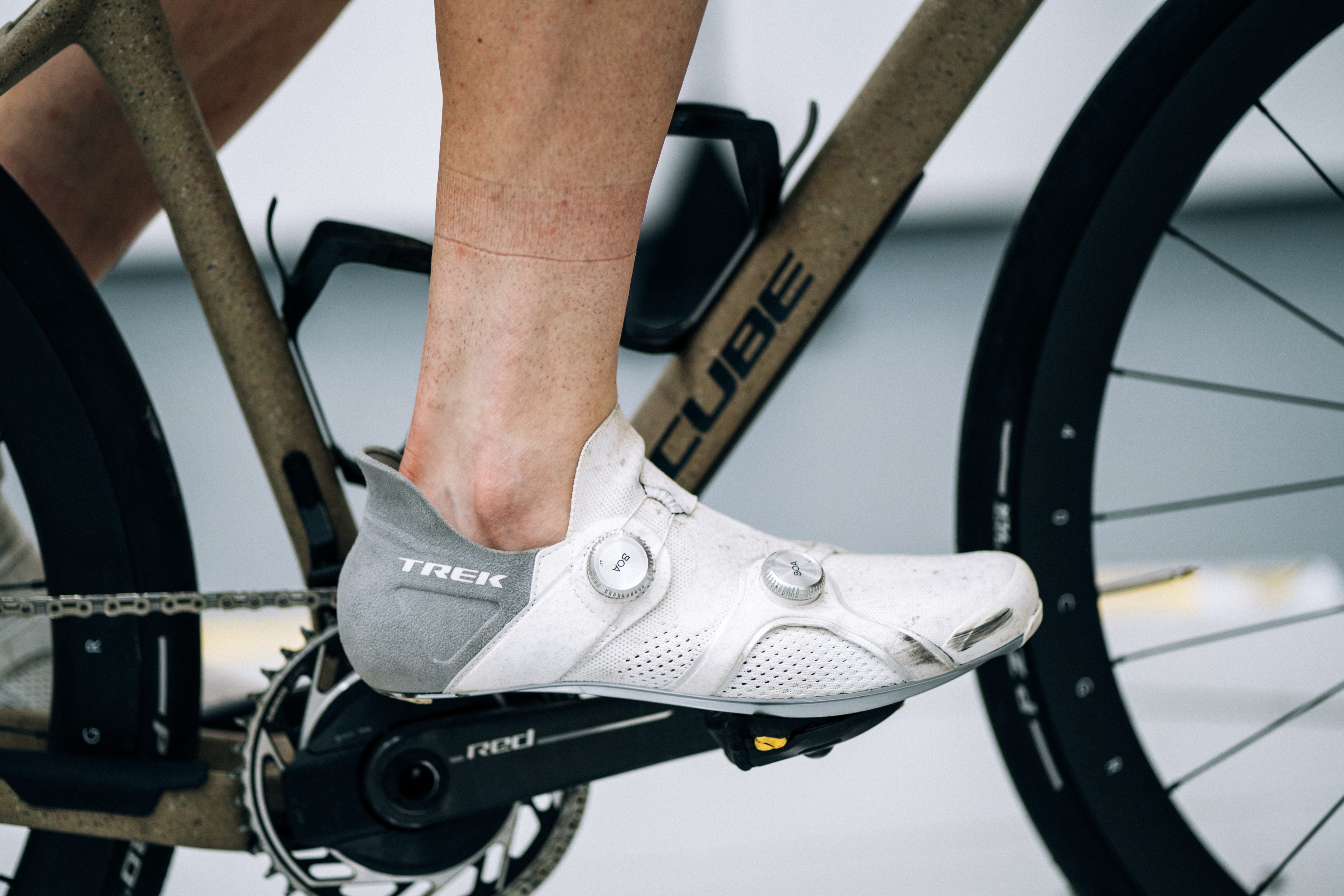
Taking them off and putting shoes on without another pair felt weird, but in the name of science, I braved the social media backlash. The result here was a CdA of 0.3958 M² (+/- 0.0032), putting you at 325.77w (+/- 2.55) to hold 40km/h, and saving you 12 seconds in our made-up 40km time trial at 250w.
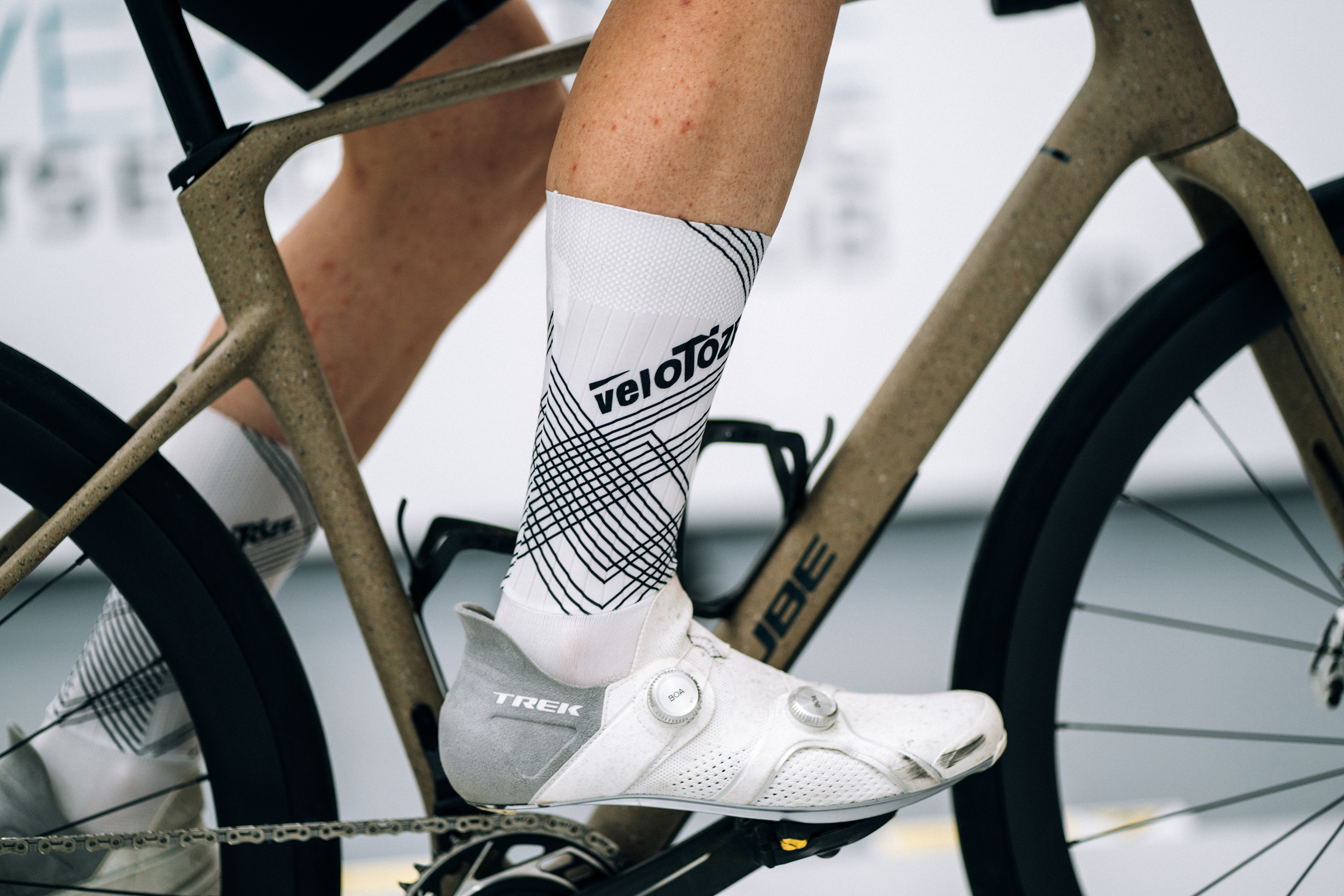
Interestingly, from here, the step up to Velotoze's Aero Socks made no significant difference (besides feeling much less uncomfortable). They landed a CdA of 0.3955 M² (+/- 0.0032), meaning you'd need to hold 325.49w (+/- 2.55) to hold 40km/h, and saving you 13 seconds in that 40km time trial at 250w over the standard Sportful socks.
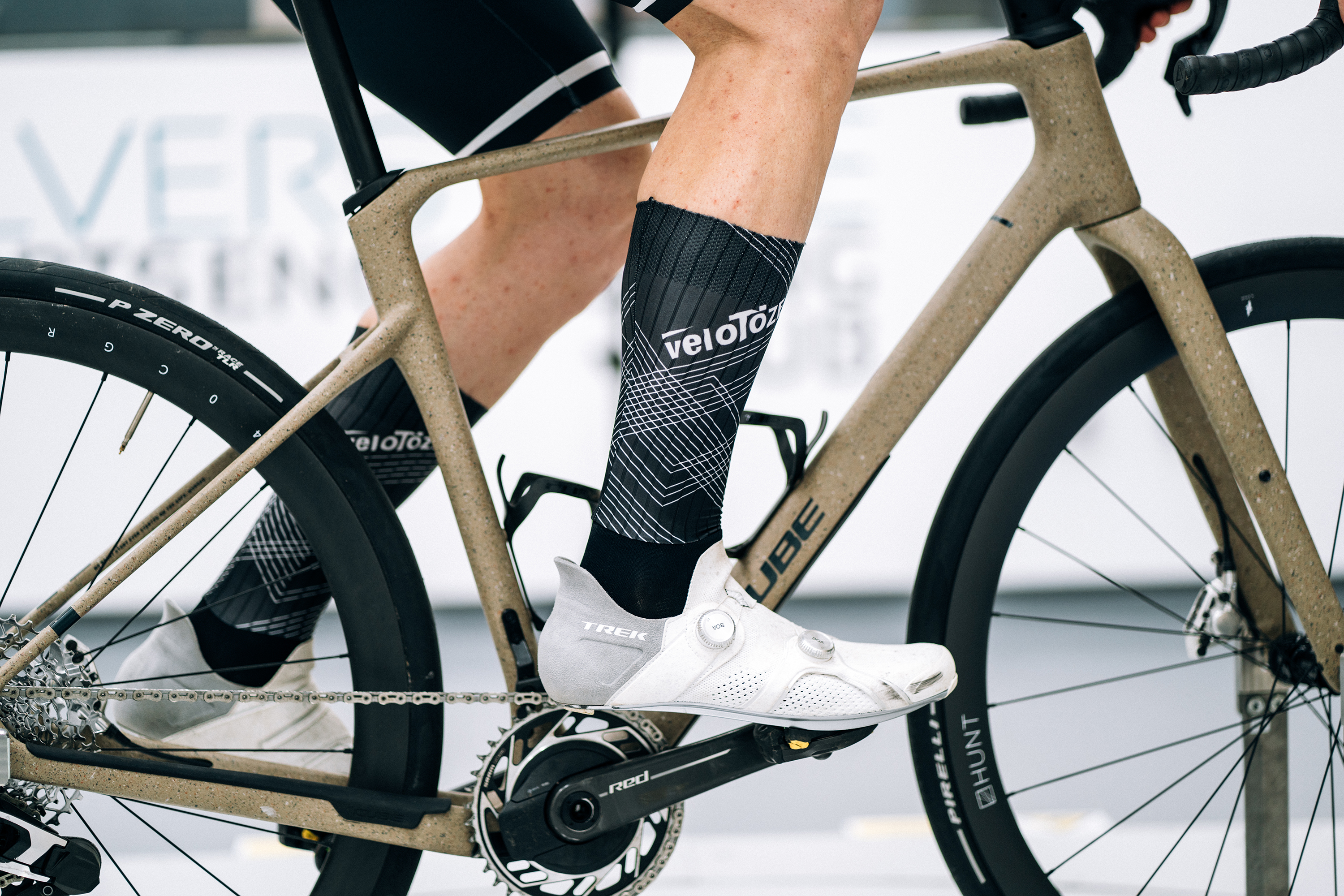
Upgrading to longer socks, courtesy of the Velotoze Aero Socks Extra Tall was worth just one more second in that arbitrary time trial, with a CdA of 0.3952 M² (+/- 0.0032), and needing 325.24w (+/- 2.55) to hold 40km/h.
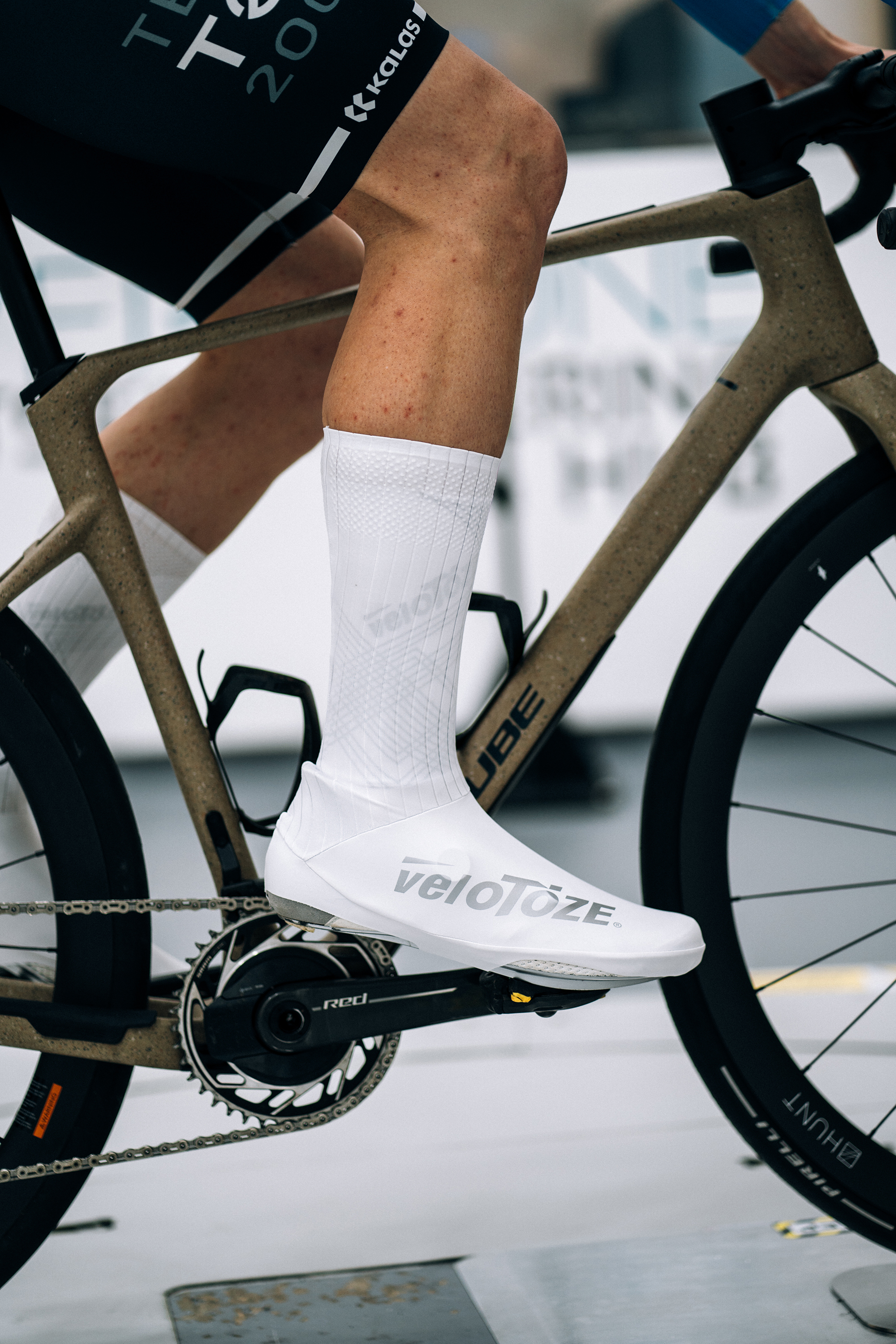
And finally, it doesn't really matter what socks you wear if you've got aero shoe covers on top, and it's here where you'll find the best performance overall, with a 25-second benefit vs the standard sock. With a CdA of 0.3919 M² (+/- 0.0032), you'll have to put out 322.58w (+/- 2.55) to hold 40km/h, which is a saving of 6.27 watts. Factoring in our error margin, that puts you at the very least 1.00 watt better off, but a best case scenario of 11.54!
Add those savings to the skinsuit above, and in just three items of clothing (including that base layer), you can save yourself a minimum of 13.79 watts, or as many as 34.87!
Aerodynamic gains aren't typically stackable in such a way that you can just add them together like this, but in the case of skinsuits and footwear, they're separate enough from each other in terms of how they interact with the wind that I think it's a safe conclusion.
Cost per watt analysis
Importantly, the available savings here are pretty good value when compared to other available upgrades.
Starting with the Kalas Passion Short Sleeve Brios, offering a saving of 10.23 watts at a price of £239 (sorry Americans, I'm doing this in GBP!) the cost per watt is £23.37.
Given it's not currently listed on the website, the price of the Velotoze aero base layer is unknown, so I've used an approximate price of £100 for this, roughly in line with competition from Rule 28 and Castelli. With the total cost of £339 and a saving of 18.06 watts, that prices it at £18.77 per watt.
Of course, the caveat to this is that we've tested against a still rather decent and modern entry-level jersey. If you're a long-time cyclist still riding in your kit from 10 or 15 years ago, the available savings are likely even bigger. What's more if you're new to cycling and choosing between an entry-level piece of kit and a more premium option, the cost per watt should be calculated against the difference in cost, rather than the total outlay for the more premium items, but that applies elsewhere and complicates things a fair bit, so I've chosen not to do that.
For the socks test, upgrading from standard socks to no socks is an obvious winner in the cost per watt stakes, at £0 per watt. But if only for the comfort side of things, we'd still be hesitant to recommend it. Switching to the aero shoe covers, meanwhile, would set you back £54.90 and yield a saving of 6.27 watts, offering a very good return of £8.75 per watt.
Comparing that to the other things we've tested over the past year, let's see how those figures stack up.
With bikes, a high-end model will save you as many as 40 watts over a very entry-level bike at the same speed, but the price is in the five-figure mark for that big a saving, so you're looking at around £250 per watt.
Even the cheapest bike on that test was £8,000 and saved 35 watts, meaning you'd pay around £230 per watt.
The best wheels don't offer quite that bad a value, but they're still not great. Upgrading to the Scope wheels will cost you over £3,000 for around a 10-watt gain, so £300 per watt, while the budget-friendly Scribe Core 60 SL netted a 9-watt saving for £1,000, which is a little over £111 per watt.
With helmets, you can save somewhere in the region of 12 watts at a rough cost of £250, and so more in line with our clothing findings, that's a little over £20 per watt.
Tyres are among the best value. A high-end pair will cost around £160, and yield a saving of around 22 watts between a fast all-rounder and a winter model. That's around £7.30 per watt.
But latex tubes is still likely the best place to start for most people. If you're running standard butyl inner tubes, a swap to latex tubes will cost about £25 for a pair. We calculated a saving of 5.4 watts in our tyre test, which works out at around £4.60 per watt.
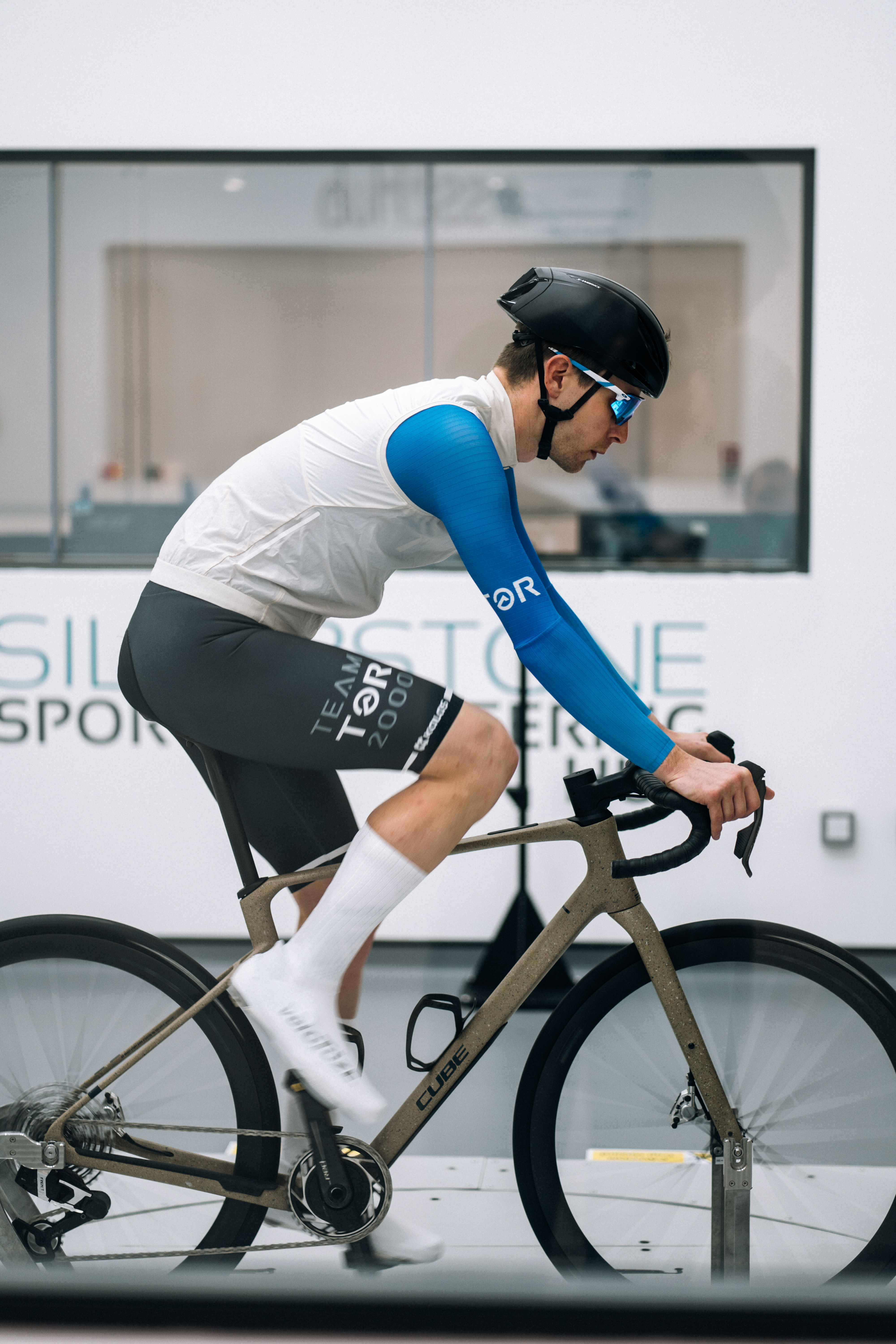
A bonus test for Geraint Thomas
First, a very large caveat to this section. The riders being compared, the on-bike positions, and the clothing in question are all different, so I'm very well aware this would never be considered useful data. But it's included here merely as a bit of fun, because why not. With a grain of salt firmly in hand, humour me.
Cast your mind back to the 2022 Tour de France grand départ, which kicked off with a city centre time trial on the streets of Copenhagen. Geraint Thomas (Ineos Grenadiers), in one of the many weird helmets on show that day, rolled down the start ramp only to realise he'd forgotten to take off his gilet.
He openly conceded afterwards that the gilet wasn't as much of a hindrance as his timid cornering, on what was a wet day that saw Stefan Bisseger (EF Education-EasyPost) crash twice. He also held his own on the faster, straighter latter half of the course, but lost 18 seconds to GC competitor, Tadej Pogačar (UAE Team Emirates) that day. But how much of that was down to the gilet?
We had a few minutes to spare at the end of our testing day and a gilet in our box of kit, so in honour of Thomas and his incredible career, we thought we'd find out. Hopefully, the Welshman will forgive me for this one.
In our test, the CdA with the gilet - a Specialized Prime Wind Vest, if you care - was 0.4043 M², 0.0123 M² more than the benchmark we tested against. At our test speed of 40km/h, that's worth approximately 10.2 watts, and at 50kph (the speed Thomas held for the time trial) it's closer to 19 watts. That's significant, but worth highlighting that the course was far from a straight, flat route, so the first part of the course would have been slower, and the latter half faster.
If it were a straight, flat course, then the difference in CdA we found would add approximately 11 seconds to Thomas's time. Given that the Welshman finished 7:22 down on the eventual winner, Jonas Vingegaard (Jumbo Visma), I think it's safe to say it didn't matter.







